The molar dental implant procedure has revolutionized the way we approach missing teeth, particularly molars that are essential for effective chewing and overall oral health. This innovative solution not only restores function but also maintains the structure of the jaw and enhances the aesthetic appearance of one’s smile. The process involves several critical steps designed to ensure the successful integration of the implant into the jawbone, ultimately resulting in a durable and functional replacement tooth.
Losing a molar can be a significant setback in one’s oral health journey. Therefore, understanding the intricacies of the dental implant procedure serves as a foundation for making informed decisions regarding tooth replacement options. From initial consultations through surgical placement and healing, each phase is crucial for achieving optimal results. In this article, we will navigate through the detailed process of getting a tooth implant, focusing on molar implants while shedding light on their importance and implications in everyday life.
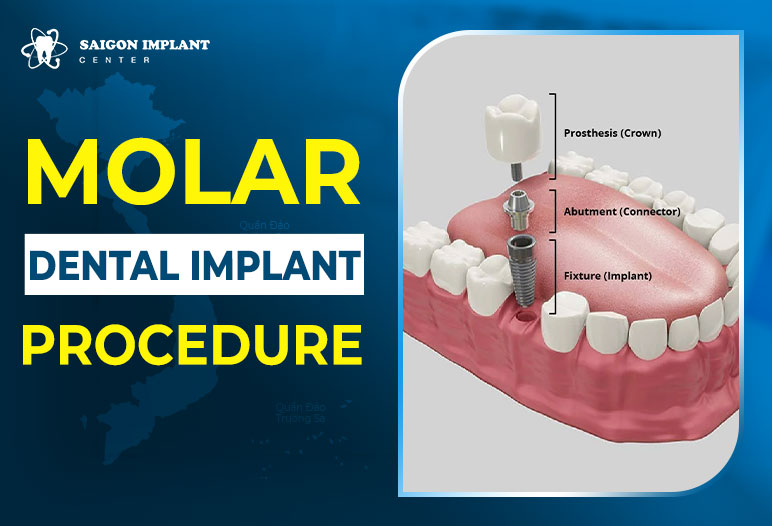
Understanding molar loss and its impact
Molars, those sturdy teeth located at the back of your mouth, play a vital role in our daily lives, allowing us to chew food effectively and maintain proper jaw alignment. Their loss can lead to a multitude of problems affecting both oral function and overall well-being.
The importance of molars for oral function
Molars are uniquely designed to facilitate powerful chewing and grinding functions, making them indispensable in our diet and nutrition. Their large, flat surfaces enable the breakdown of food, which aids significantly in digestion.
Beyond their primary function of chewing, molars contribute to a balanced bite by working in tandem with other teeth. They help distribute chewing forces evenly across the jawbone, preventing undue stress on any single tooth. Additionally, their roots stimulate the surrounding jawbone, promoting density and strength, which is crucial for maintaining oral health.
Moreover, molars also play a subtle role in speech clarity. While they may not be as prominent as incisors or canines in pronunciation, they still aid in articulating certain sounds, highlighting their multifaceted importance in our daily interactions. Finally, by supporting the jawbone, molars help preserve facial structure, contributing to the overall aesthetics of one’s face.
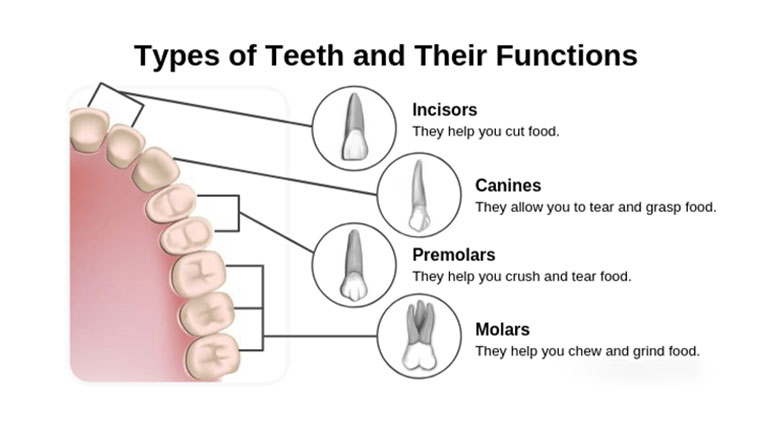
Consequences of molar loss: Bite issues and oral health
When one or more molars are lost, it sets off a chain reaction of negative consequences that can impact various aspects of oral health. The first notable consequence is bite problems. A missing molar disrupts the balance of the bite, causing adjacent teeth to shift and leading to painful misalignments. This shifting can make chewing uncomfortable and may even cause headaches due to muscle strain.
Another significant issue related to molar loss is jawbone deterioration. The roots of healthy molars stimulate the jawbone, but when a molar is lost, the lack of stimulation causes the bone to resorb or shrink over time. This leads to a sunken facial appearance, which can affect self-esteem and the quality of life.
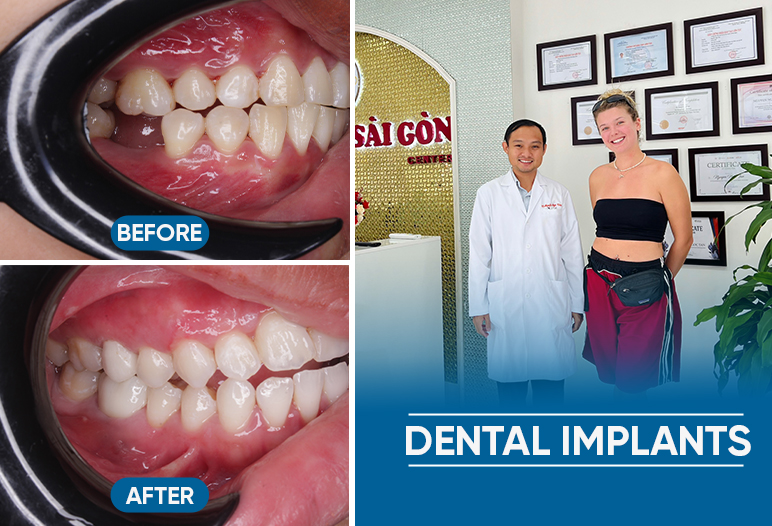
Furthermore, difficulty in chewing becomes evident as specific foods become challenging to handle without the grinding action provided by molars. This can result in digestive problems and nutritional deficiencies, as a compromised ability to chew properly often leads individuals to avoid harder foods rich in necessary nutrients.
Speech impediments may also arise from the absence of molars. Certain words require the back of the mouth for pronunciation, and losing molars can interfere with this, making communication a challenge. Lastly, gaps left by missing molars create spaces that harbor bacteria, increasing the risk of tooth decay and gum disease.
Another serious consequence of molar loss involves temporomandibular joint (TMJ) problems, stemming from altered bite alignment. TMJ disorders can result in chronic pain, clicking sounds in the jaw, and a host of other complications that significantly impact the quality of life.
The molar implant procedure: A step-by-step guide
The molar implant procedure is an intricate process designed to replace missing molars effectively. It typically unfolds in several phases, beginning with assessments and consultations and culminating in the placement of a custom crown. Understanding these steps is essential for anyone considering dental implants for molars.
Initial consultation and assessment
The journey toward receiving a molar implant starts with an initial consultation with a qualified dental professional. During this visit, the dentist conducts a comprehensive evaluation of your oral health. This examination includes assessing the condition of your remaining teeth, gums, and jawbone.
A thorough discussion of your medical history follows, where you should disclose any pre-existing conditions, medications, or allergies that could affect the procedure. This information is pivotal for the dentist to determine your suitability for an implant.
The next step involves evaluating the state of your jawbone, as adequate density and volume are crucial for supporting a dental implant. Digital scans and X-rays offer insight into your bone structure, enabling the dentist to visualize the area where the implant is needed.
Following these assessments, the dentist will explain the molar implant procedure in detail, ensuring that all your questions are answered. A customized treatment plan tailored to your individual needs and preferences will be developed, setting the stage for the surgical phase.
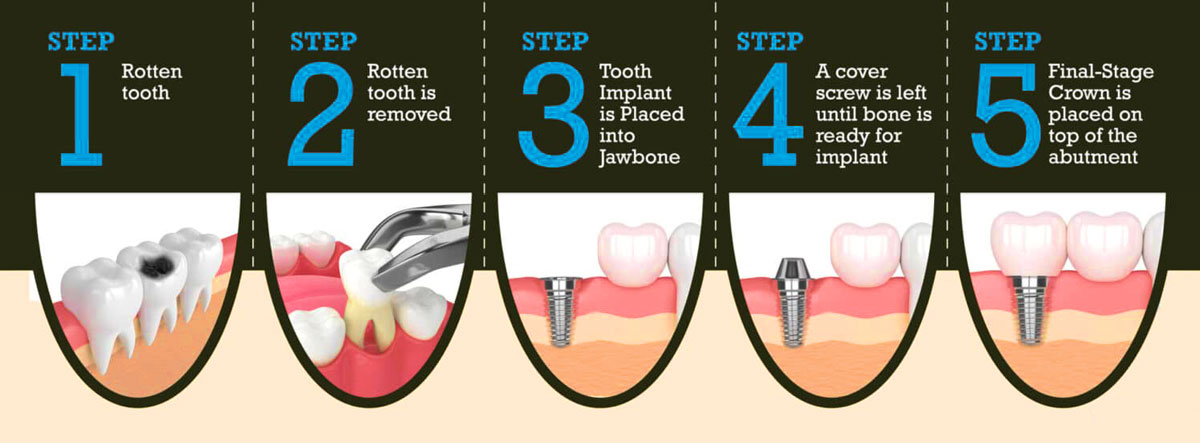
The surgical phase: Implant placement
Once all preliminary assessments are complete, the surgical phase begins. This phase is usually performed under local anesthesia, although sedation options are available for those who prefer a more relaxed experience. The procedure unfolds through several carefully orchestrated steps.
First, a small incision is made in the gum tissue to expose the underlying jawbone. This step lays the groundwork for what comes next—pilot hole drilling. Using a series of increasingly larger drills, the dentist creates a precise hole in the jawbone where the implant will be placed.
Once the hole is adequately prepared, the titanium implant is carefully inserted. This implant acts as the root of the missing molar, providing a strong foundation for the artificial tooth. After placing the implant, the gum tissue is sutured back into position, covering the newly placed implant.
Osseointegration: The healing process
The osseointegration phase is critical for the success of the molar implant. This healing period allows the jawbone to bond naturally with the titanium implant, forming a robust and stable foundation. Typically, this process takes 3-6 months, during which careful attention must be paid to oral hygiene.
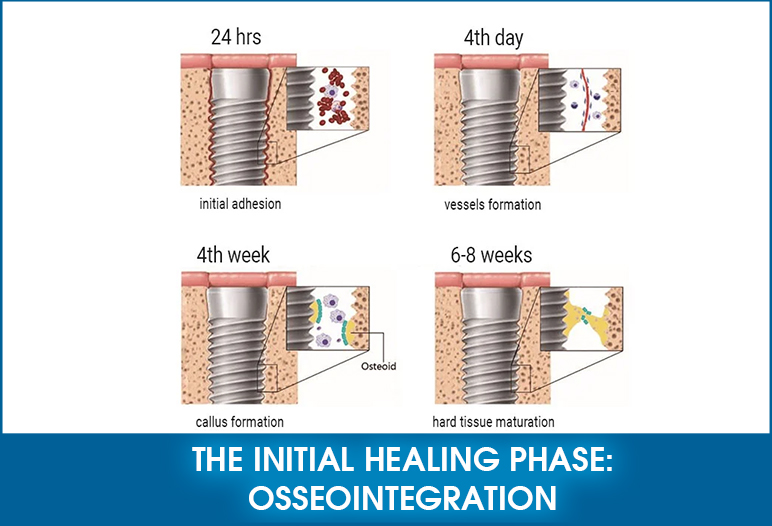
Maintaining good oral hygiene during this time is essential. Patients are advised to gently brush and floss around the implant area according to their dentist’s instructions. Additionally, putting pressure on the implant site by chewing hard foods should be avoided to ensure smooth healing.
Following post-operative care instructions is key to a successful outcome. These could include taking prescribed antibiotics or pain relievers and adhering to follow-up appointments, allowing your dentist to monitor the healing progress closely.
Restorative phase: Placing the abutment and crown
Once the implant has successfully integrated with the jawbone, the restorative phase commences. This phase entails attaching an abutment—a small connector—to the implant, followed by placing a custom-made crown on top, which represents the final artificial tooth.
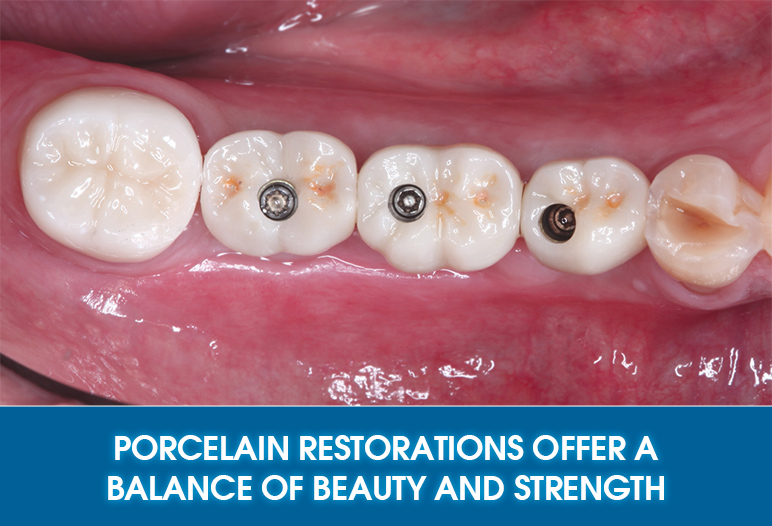
Creating a custom abutment
Before placing the abutment, the gum tissue surrounding the implant must be delicately opened to uncover it. The next step involves securely attaching the abutment to the implant.
After this, impressions of the abutment and surrounding teeth are taken to create a model for the crown. These impressions are crucial in ensuring that the new crown fits seamlessly with the existing teeth and aligns properly in the bite.
To protect the implant and abutment while awaiting the fabrication of the permanent crown, a temporary crown may be placed. This temporary fixture offers some functionality while offering the necessary protection during the healing process.
Attaching the artificial tooth (Crown)
The final and exciting step in the molar implant procedure involves placing the custom-made crown. Crafted based on the impressions taken earlier, the crown is designed to match the shape, size, and color of your existing teeth, ensuring a natural appearance.
Upon its arrival from the dental laboratory, the final crown is securely cemented onto the abutment. It’s essential for the dentist to make any necessary adjustments during this fitting to ensure a perfect fit and comfortable bite.
With the successful placement of the crown, patients can enjoy the restored function and aesthetics of having a complete set of teeth.
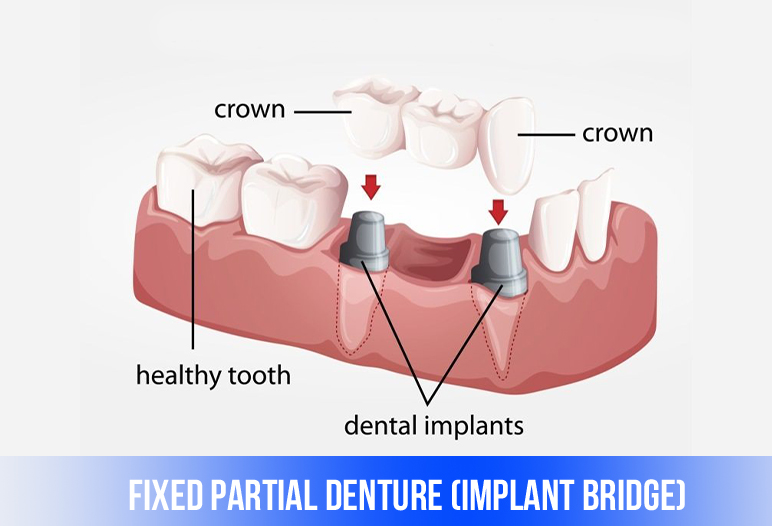
Caring for your molar implant
Maintaining good oral hygiene is paramount for the long-term success of your molar implant. Dedicated care not only helps prevent complications but also ensures the implant remains a functional part of your dental landscape for many years.
Maintaining oral hygiene with an implant
To maintain optimal oral hygiene with an implant, it’s essential to brush twice daily, utilizing a soft-bristled toothbrush alongside fluoride toothpaste. Special attention should be given to the area around the implant to mitigate plaque build-up.
Daily flossing is equally critical, whether using traditional dental floss or interdental brushes to clean between the implant and neighboring teeth. Rinsing with an antibacterial mouthwash can also help curb the accumulation of harmful bacteria, enhancing oral health.
Moreover, it’s crucial to avoid harmful habits such as chewing on hard objects, biting nails, or using tobacco products that can jeopardize the integrity of the implant. Some patients might benefit from specialized cleaning tools recommended by their dentist, such as water flossers, which can offer additional support in maintaining cleanliness around the implant site.
Regular checkups and professional cleanings
Regular visits to your dentist for check-ups and professional cleanings are integral to the longevity of your molar implant. These appointments allow the dentist to monitor the implant’s condition, ensuring it functions correctly and that surrounding tissues remain healthy.
During professional cleanings, plaque and tartar that cannot be removed through regular brushing are eliminated, reducing the risk of gum disease and other complications. Moreover, consistent check-ups provide opportunities for early identification and addressing potential issues before they escalate.
Your dentist can also provide valuable advice on maintaining optimal oral health, ensuring you have the best chance of enjoying your implants for years to come.
Who is a good candidate for molar implants?
While molar implants are generally a safe and effective solution for tooth replacement, not everyone is an ideal candidate. Several factors can influence a person’s suitability for undergoing the implant procedure.
General health and oral health considerations
Good overall health is foundational for candidates considering molar implants. Individuals with chronic conditions, such as uncontrolled diabetes or heart disease, may require special considerations before undergoing surgery.
Healthy gums and jawbone are also essential prerequisites. Sufficient jawbone density is crucial for successful osseointegration; those with gum disease or inadequate bone may need bone grafting procedures before proceeding with implant placement.
Additionally, any active infections, such as periodontal disease, must be treated prior to surgery to minimize the risk of complications. A commitment to good oral hygiene practices is also necessary, ensuring patients can effectively maintain their implants over time.

Lifestyle and habits
Lifestyle choices can significantly impact the success of molar implants. For instance, smoking can impede healing and increase the risk of implant failure. Therefore, patients who smoke are generally encouraged to quit for a specified period before and after surgery.
Bruxism, or excessive teeth grinding, can place undue stress on implants, necessitating the use of a night guard to protect the implant during sleep. Additionally, recreational drug use can hinder the healing process, thus compromising the implant’s success.
Understanding the implications of lifestyle choices is essential for prospective implant patients, as these factors can heavily influence the outcome of the procedure.
Choosing the right dental professional
Selecting an experienced and qualified dental professional is critical for a successful molar implant procedure. The expertise and skill of the dentist and their team play a significant role in patient outcomes.
Importance of experienced surgeons
Opting for a dental professional with a wealth of experience in performing molar implants can yield more favorable results. Experienced surgeons possess the technical skills required to navigate the complexities associated with implant placement, leading to fewer complications and enhanced patient satisfaction.
Furthermore, a skilled dentist can better anticipate and address any challenges that arise during the procedure, helping to streamline the entire process while prioritizing patient comfort and safety.
Consulting with multiple professionals
It can be beneficial to consult with multiple dental professionals before making a decision. Doing so allows patients to evaluate different perspectives, treatment plans, and pricing structures.
This thorough investigative process empowers individuals to make informed choices about their dental care, arming them with insights to select the practitioner best suited to meet their unique needs.
The cost of molar dental implants
Understanding the financial aspects of molar dental implants is essential for patients considering this solution. The cost can vary widely based on several factors, including the complexity of the case and the materials used.
Factors affecting the overall cost
Several elements can influence the total cost of molar dental implants. These include the type of implant chosen, any preparatory procedures like bone grafting, and the location of the dental practice.
Additional costs may stem from imaging technologies utilized during assessments, the complexity of the surgical procedure, and the need for temporary crowns while waiting for permanent restorations.
Financing options
Many dental practices recognize the financial burden associated with molar implants and offer financing options to ease the payment process. Payment plans can spread out the cost over time, making it manageable for patients seeking to restore their dental function.
Insurance coverage can also vary for dental implants, so it’s advisable to consult with your insurance provider to understand what portions of the treatment may be covered. Explore all available options to identify a solution that fits within your budget while prioritizing your overall dental health.
Conclusion
The molar dental implant procedure is not just a restorative option; it represents a pathway to regained function, improved aesthetics, and enhanced quality of life. Understanding the significance of molars, the consequences of their loss, and the meticulous process involved in implant placement lays the groundwork for informed decisions regarding dental care.
From the initial consultation to the final placement of the crown, each step is designed to ensure the best possible outcome, restoring the vital functions that molars serve. As advancements in dental technology continue to evolve, molar implants stand as a testament to the power of modern dentistry in transforming lives for the better.

 Google Reviews
Google Reviews Call
Call
SAIGON IMPLANT CENTER
Best dentist in Vietnam
Saigon Implant Center - Dental Clinic utilizes the latest technology for specialized treatment in the field of Single implant, full jaw implants, All on 4 implants, All on 6 implants, Zygoma implant....
SAIGON IMPLANT CENTER
Best dentist in Vietnam
Saigon Implant Center - Dental Clinic utilizes the latest technology for specialized treatment in the field of Single implant, full jaw implants, All on 4 implants, All on 6 implants, Zygoma implant....